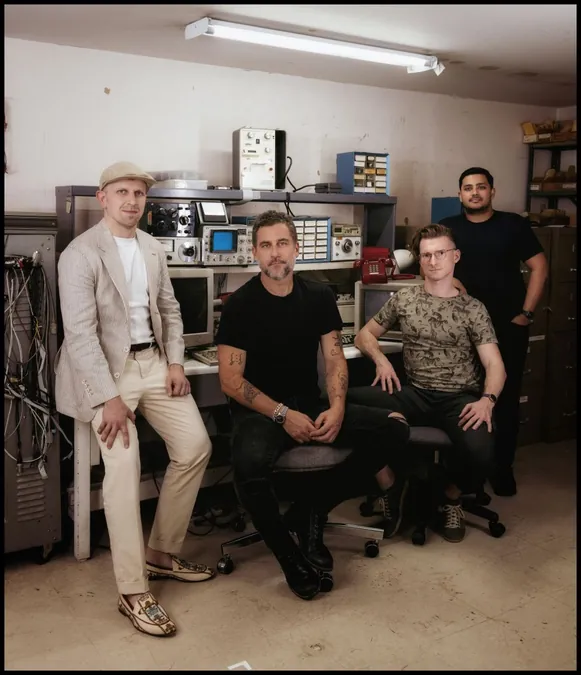
Navigating Change: How Modern Technology is Bridging the Training Gap for Seafarers
2025-04-07
Author: Daniel
In a lively discussion marked by humor and camaraderie, Captain Pradeep Chawla jovially quipped, “Youngsters first!” as he graciously allowed his long-time friend, Captain Vikrant Gusain, to take the lead. "Though, I’m a 28-year-old in the body of a 68-year-old!" Chawla added, prompting laughter.
Both seasoned mariners forged their friendship during their early seafaring days in Hong Kong in the early '90s. Today, Chawla heads MarinePALS, an innovative microlearning platform dedicated to revolutionizing seafarer training through engaging bite-sized content, gamification, and virtual reality. Meanwhile, Gusain manages Dockendale, which is in the process of launching a training institute in Mumbai in partnership with MarinePALS.
The motivation for their collaboration transcends mere friendship. “During the Covid pandemic, we realized that traditional classroom training was not feasible. Young seafarers are more inclined to learn through their mobile devices than through textbooks, and their attention spans have shrunk,” Chawla explained.
Gusain echoed his sentiments, expressing admiration for Chawla’s commitment to enhancing the education and well-being of seafarers. Dockendale's training platform is on track to expand from 20 vessels to its entire fleet of 65 by the end of 2025, yielding impressive results. A reported 30% improvement in Port State Control performance highlights the success of their innovative training methods, with Dockendale emerging as a leader in industry performance metrics.
One of the most engaging aspects of their training program involves a game where seafarers assume the role of Port State Control (PSC) inspectors, recognizing defects in a virtual ship environment. “This approach trains their observational skills without the monotony of conventional classroom methods,” Chawla emphasized.
As the shipping industry adapts to the rapidly changing landscape—especially with the introduction of alternative fuels—practical training has become increasingly urgent. With new regulations like the European Union Emissions Trading System and International Maritime Organization targets looming, seafarers must also be equipped to handle the new fuels being adopted in the industry.
“Preparing our crews for alternate fuels is crucial. As new ship orders surge, it's vital to be ahead of the curve in emissions management,” Gusain noted. The focus is now on ensuring that crew members understand the safety protocols associated with these fuels.
Chawla further elaborated on the shift in training focus towards green fuels, remarking that the traditional approach involved extensive and complex materials. “Current LNG training encompasses a lengthy 138-page code and spans five days. Our aim is to distill this information into essential safety protocols that can be easily recalled,” he said.
Utilizing several short training videos before crucial operations, Chawla aims to make learning more engaging. “Employees often reject the idea of traditional refresher courses. Micro-learning is a solution that emphasizes safety and preparedness,” he declared.
Unsurprisingly, Chawla highlighted that many existing training packages are often bogged down by technical jargon surrounding net-zero emissions and sustainability messaging. “If I choose LNG as fuel, my primary concern is the crew's safety. While environmental targets are relevant, they do not eclipse my responsibility to ensure a secure operational environment,” he stated.
The monumental challenge before the maritime industry is training and certifying its approximately 800,000 seafarers to adeptly handle vessels employing low-emission fuels by the mid-2030s. “It’s not an impossible dream. Certification can happen, but actual experience? That’s the hurdle,” Chawla acknowledged.
In a world striving for progress, the fusion of technology and innovative training methods provides hope for a brighter, safer, and more efficient future in the maritime industry. As the landscape continues to evolve, adapting to the needs of Generation Z and beyond will be vital for the sustainable success of seafarers and shipping companies alike.





 Brasil (PT)
Brasil (PT)
 Canada (EN)
Canada (EN)
 Chile (ES)
Chile (ES)
 Česko (CS)
Česko (CS)
 대한민국 (KO)
대한민국 (KO)
 España (ES)
España (ES)
 France (FR)
France (FR)
 Hong Kong (EN)
Hong Kong (EN)
 Italia (IT)
Italia (IT)
 日本 (JA)
日本 (JA)
 Magyarország (HU)
Magyarország (HU)
 Norge (NO)
Norge (NO)
 Polska (PL)
Polska (PL)
 Schweiz (DE)
Schweiz (DE)
 Singapore (EN)
Singapore (EN)
 Sverige (SV)
Sverige (SV)
 Suomi (FI)
Suomi (FI)
 Türkiye (TR)
Türkiye (TR)
 الإمارات العربية المتحدة (AR)
الإمارات العربية المتحدة (AR)